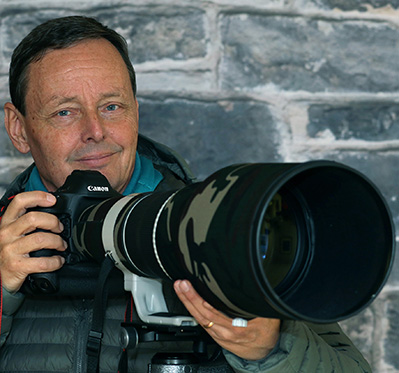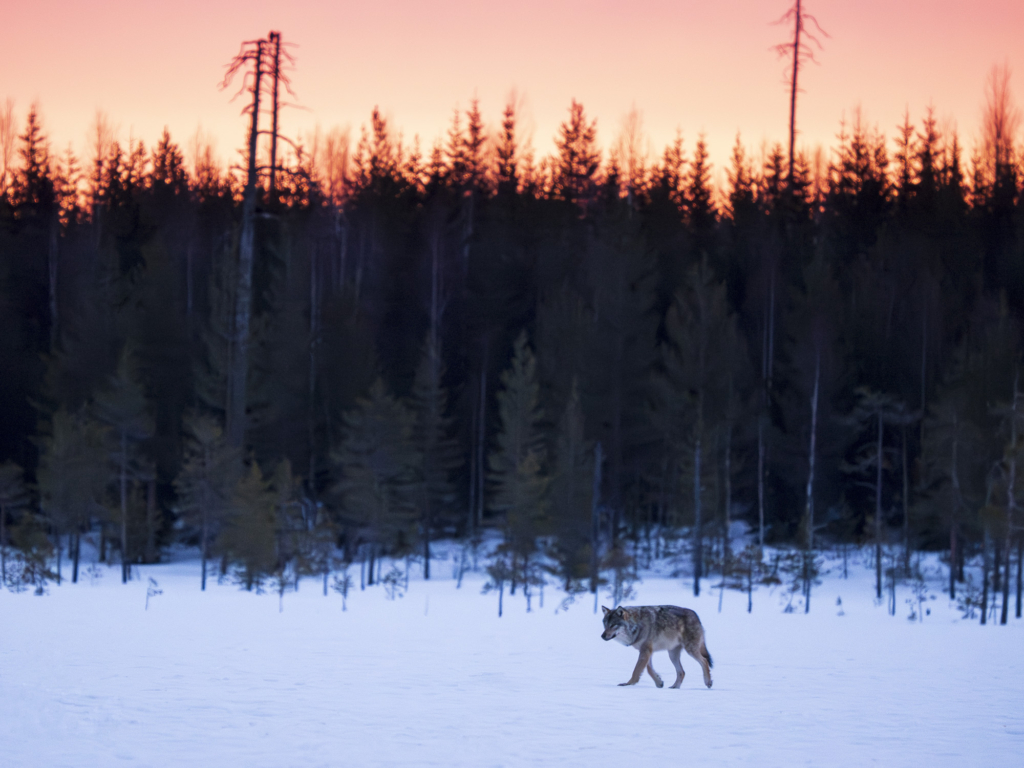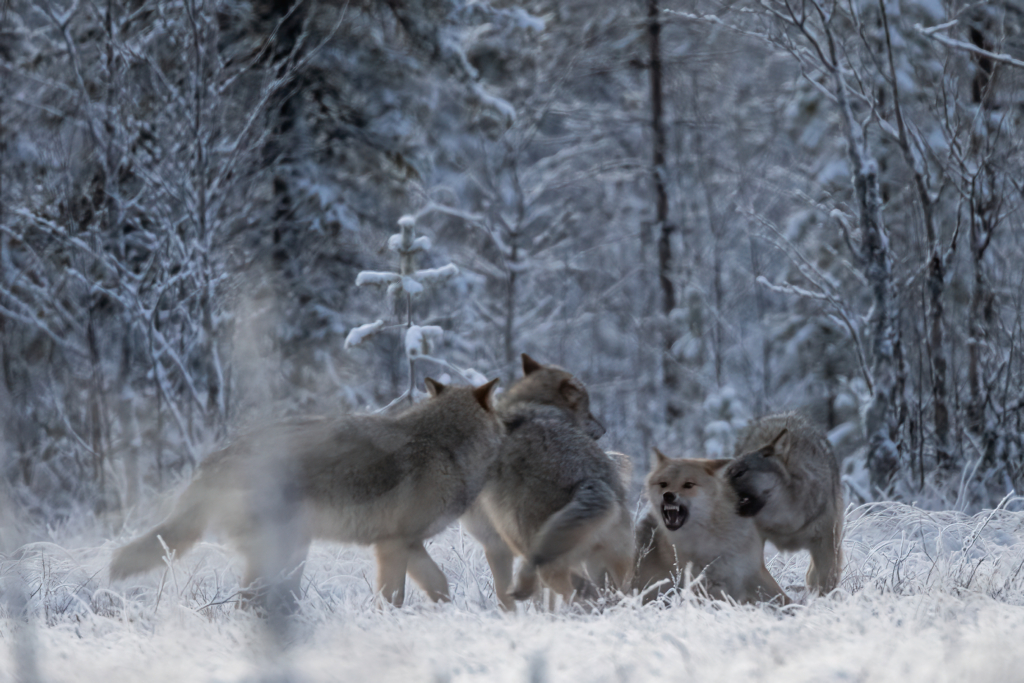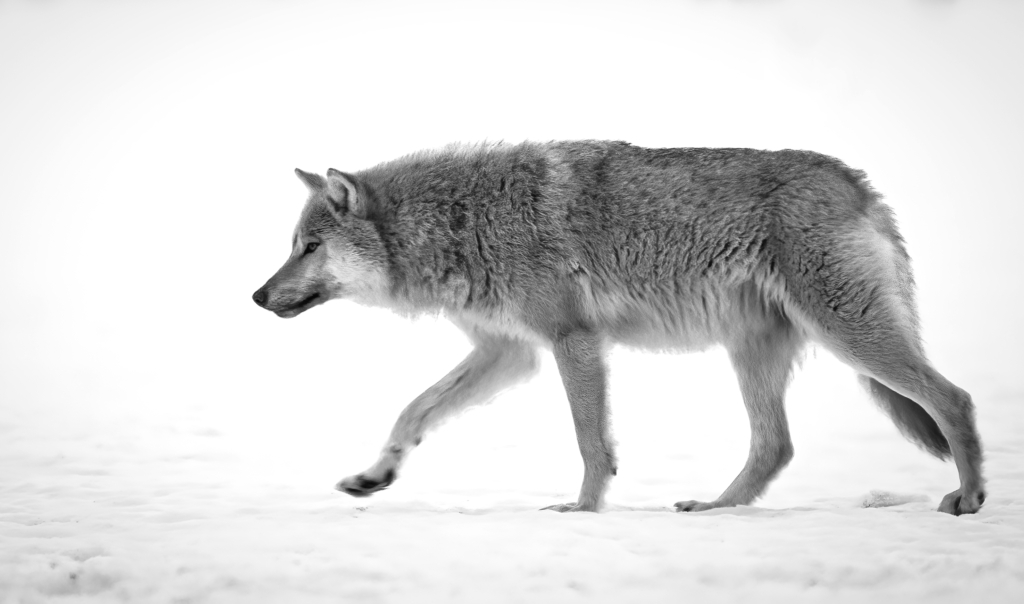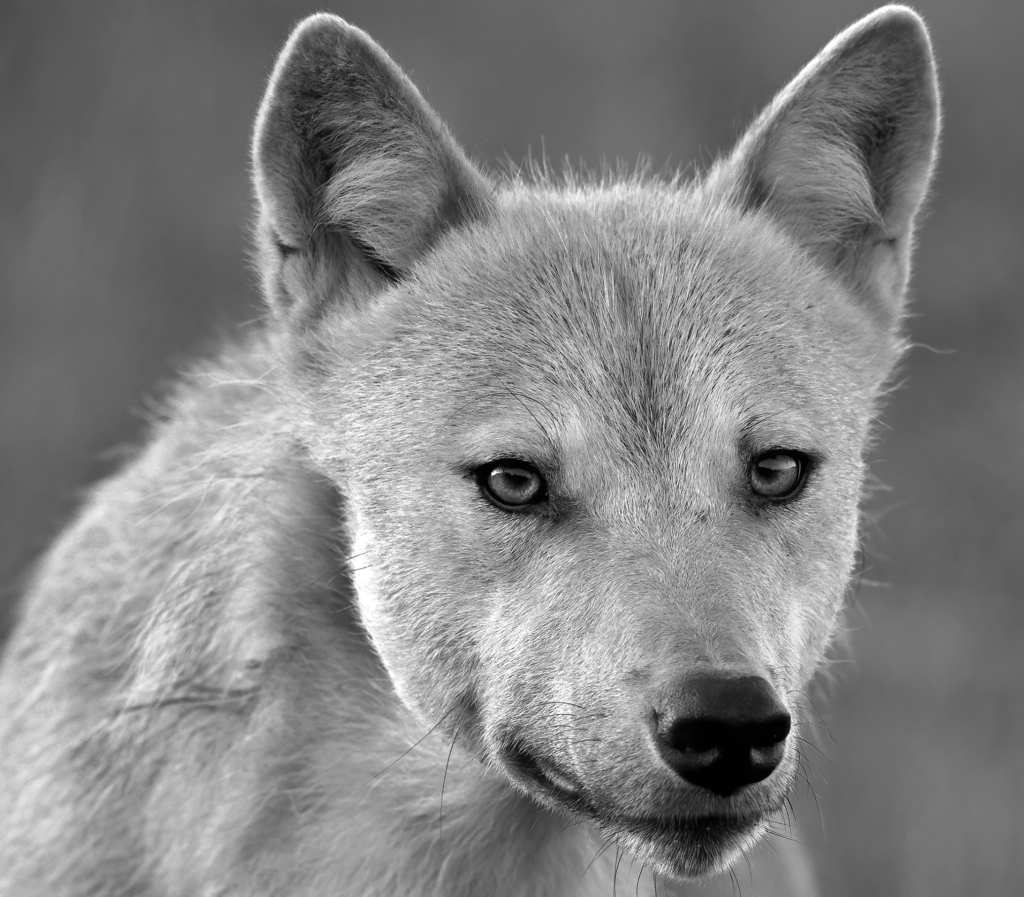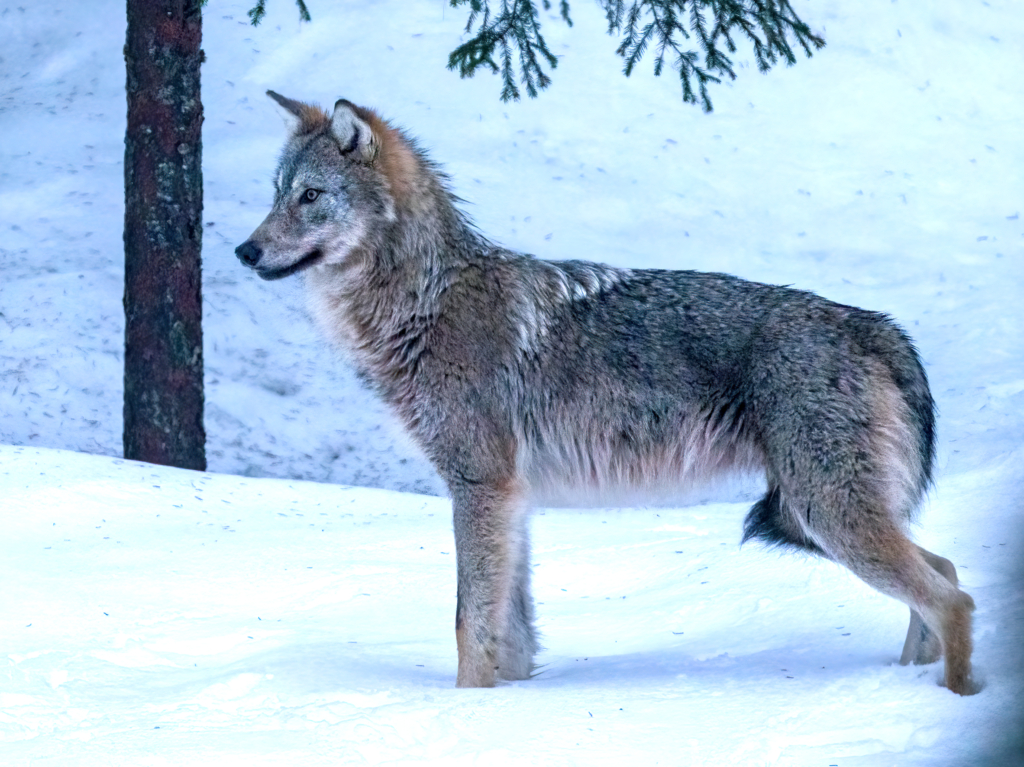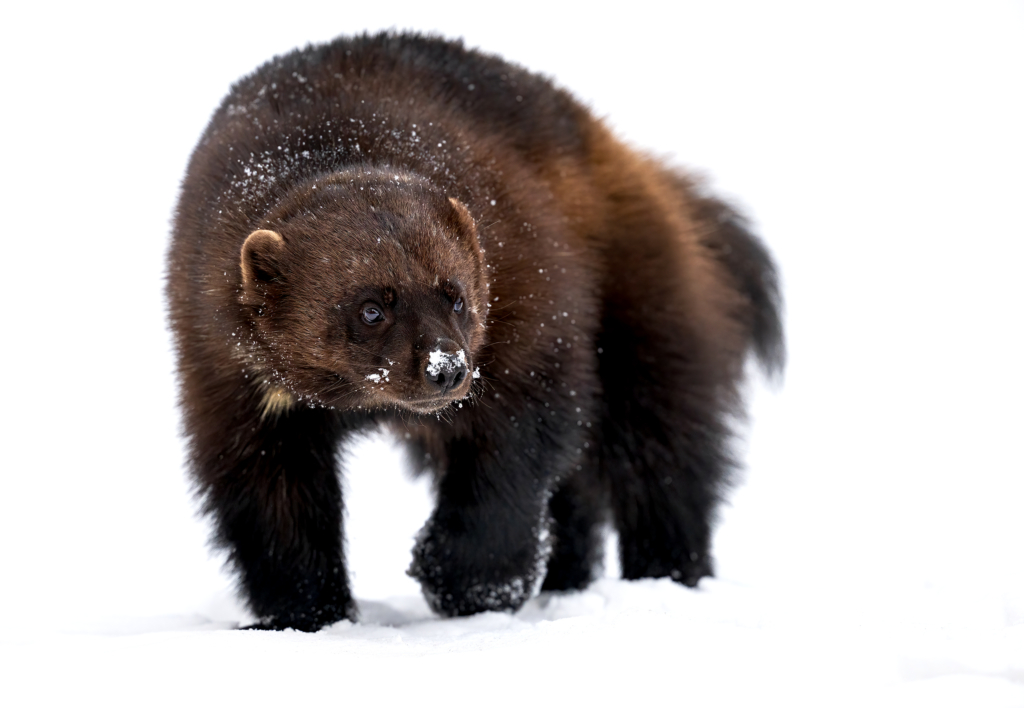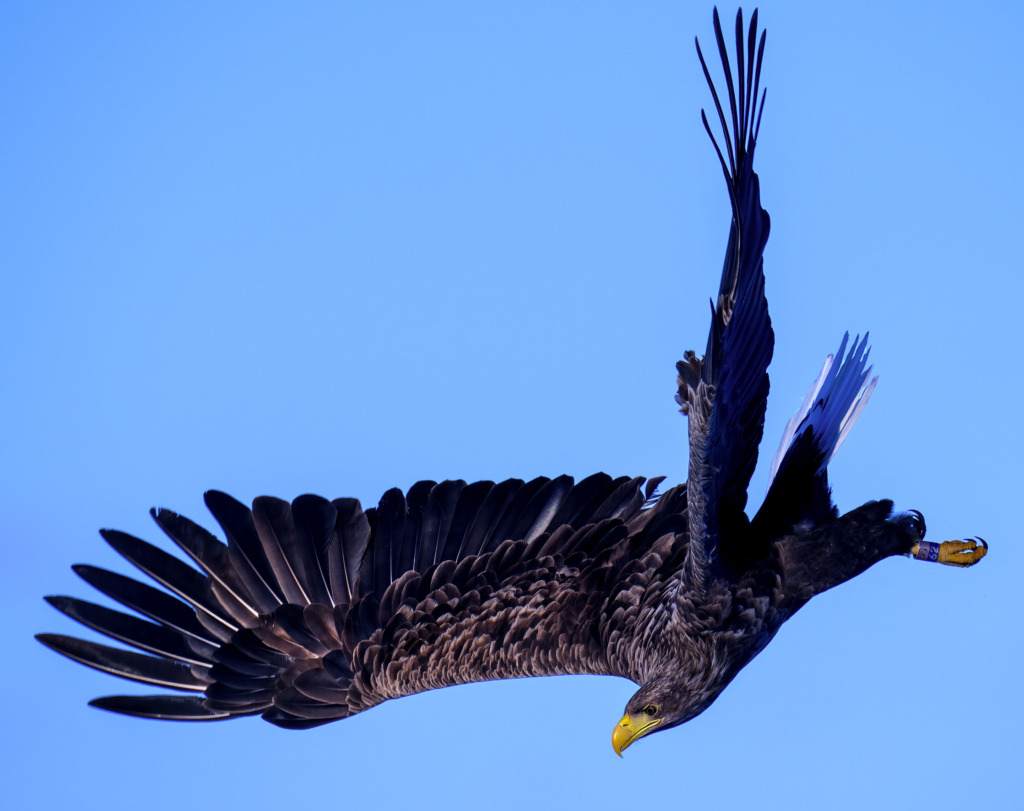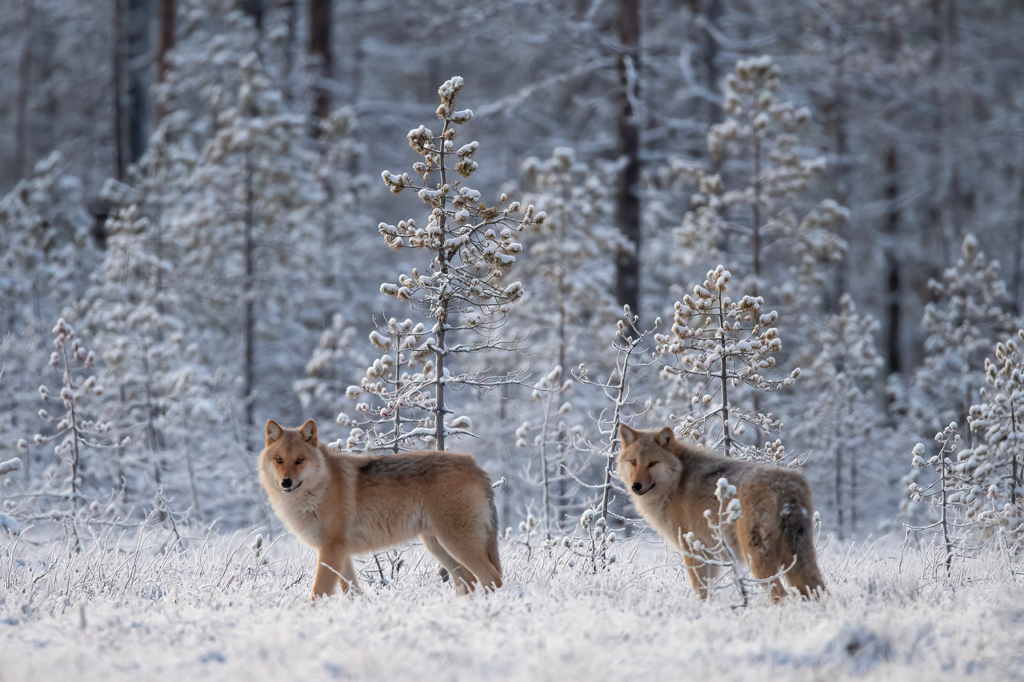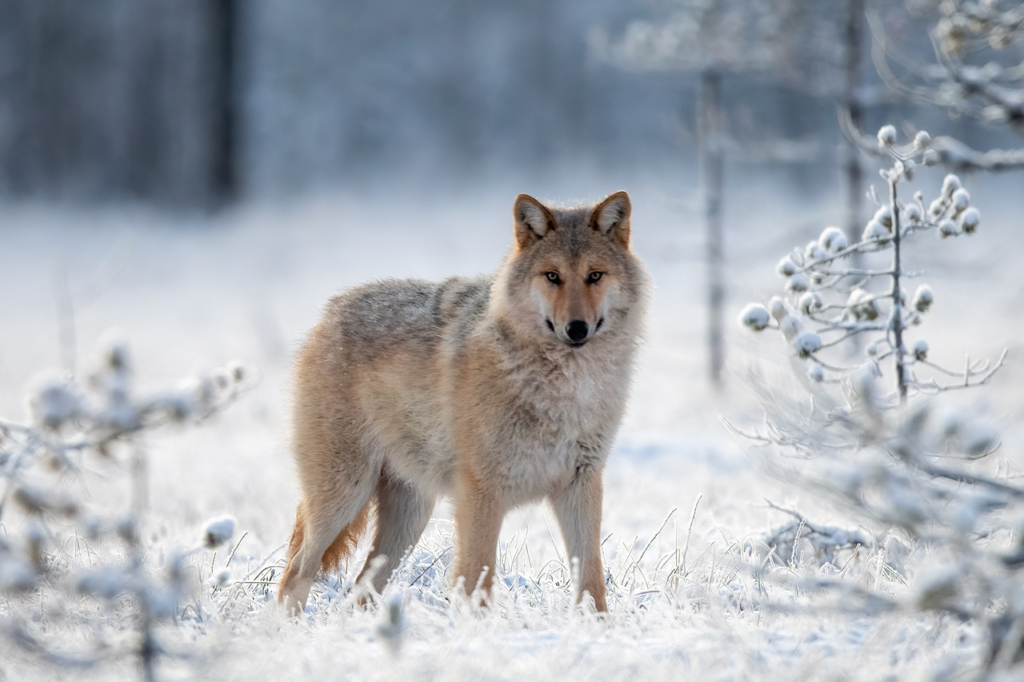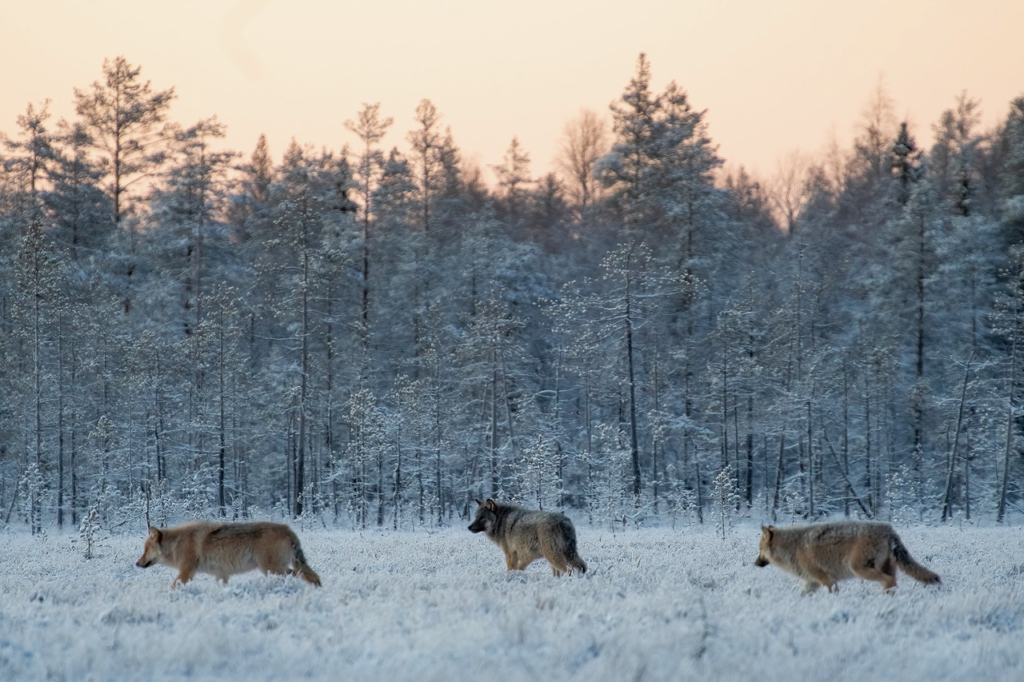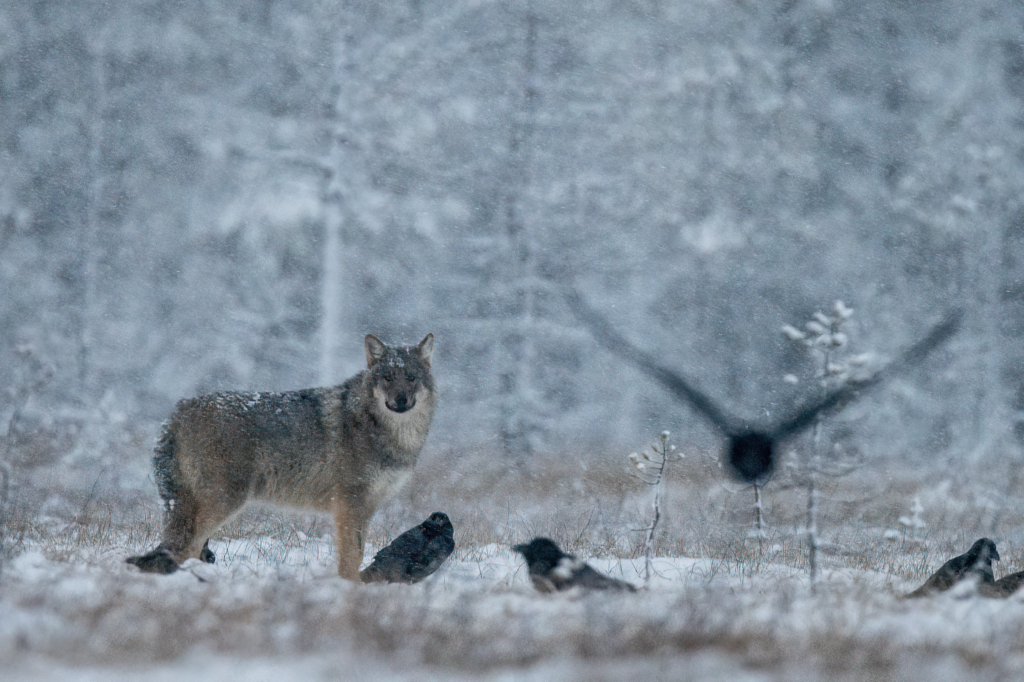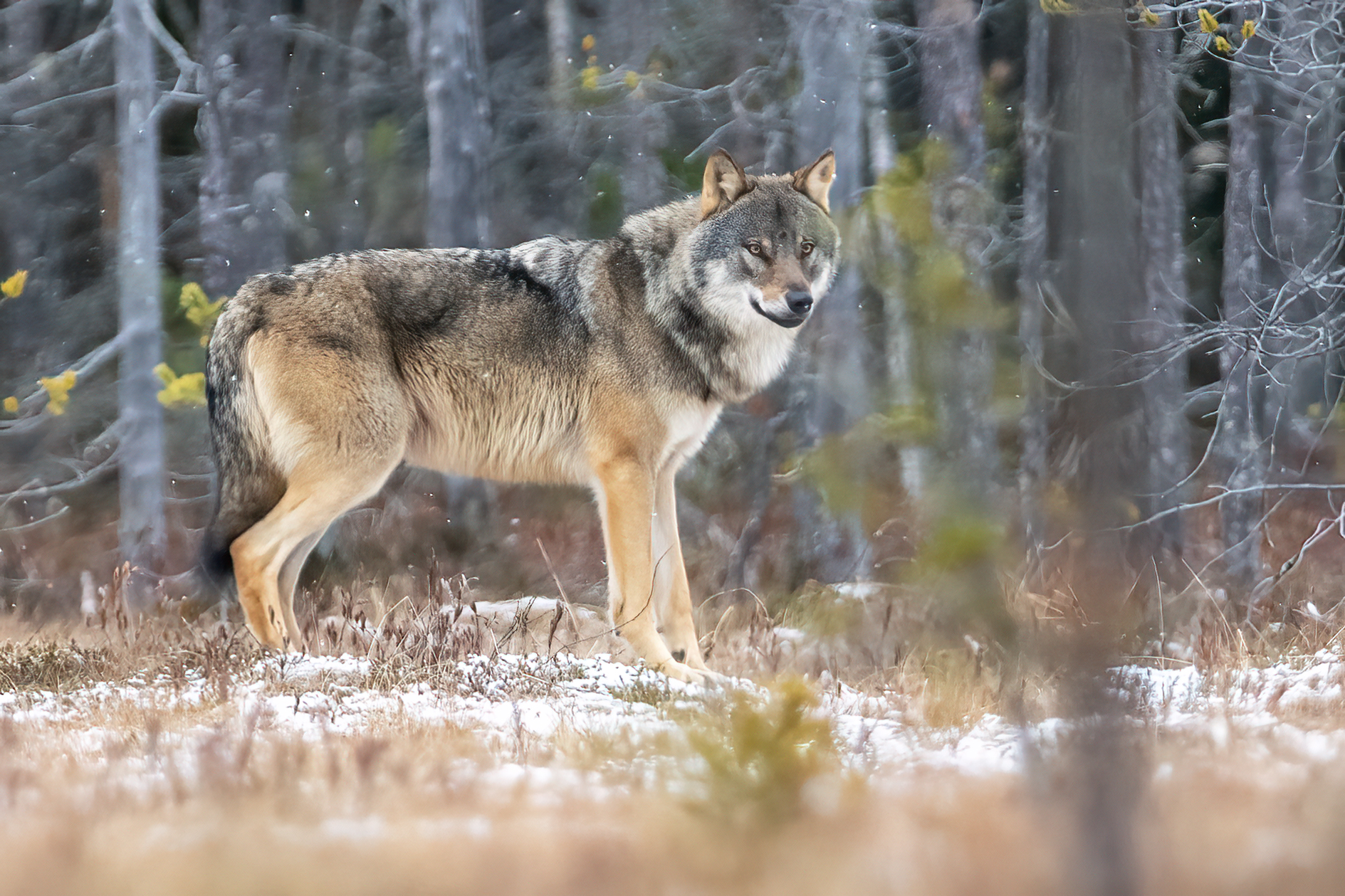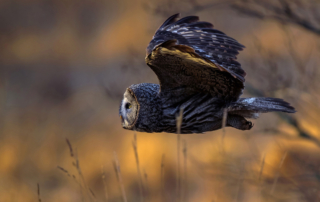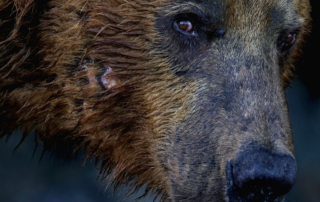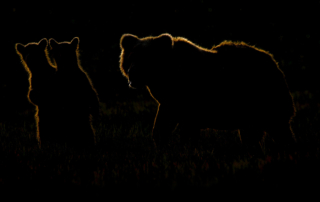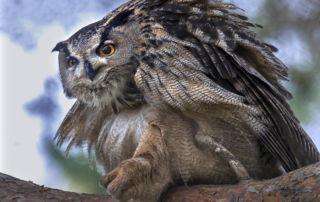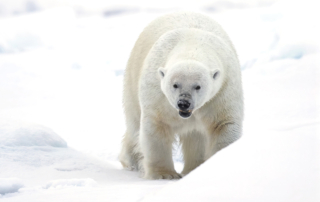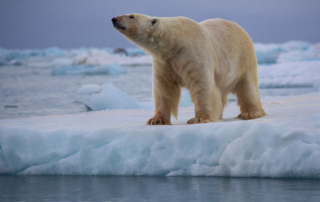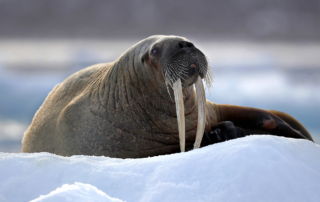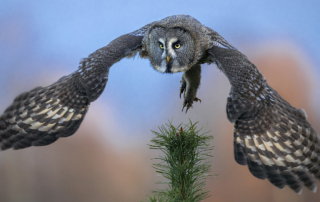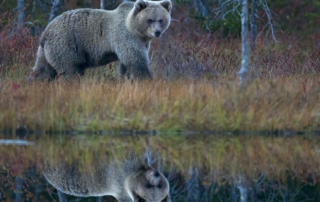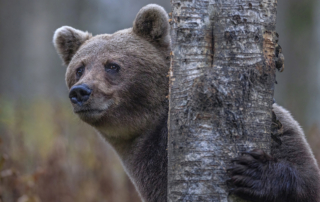SOME HIGHLIGHTS
- Great opportunity to see wolves at their most beautiful in their winter coats
- New hide environments at the location
- Lodge accommodation at night
- Propane heaters in the hides
- Small group, maximum 6 participants
- Wolverines, white-tailed eagles, and golden eagles often visit the hide area
- Expert guidance on action photography and low-light photography
- Workshops every evening
- Bonus workshop; Can dog behavior be compared to that of wolves?
As autumn gradually transitions into winter, the bears of eastern Finland retreat into hibernation, and many wildlife photography tour operators take a seasonal break. However, along the Finnish-Russian border, there are other predators that do not rest for the winter. When the bears sleep, the terrain suddenly opens up for wolves and wolverines…
The wolf is perhaps at its most beautiful when it has grown its thick, bushy winter coat, and the year’s wolf pups have matured enough to venture out on their own. At this time of year, temperatures often drop below freezing, and the landscape is frequently adorned with frost or snow. Sometimes, gentle snowflakes drift from the sky…
This is a perfect opportunity to capture stunning images of wolves, but wolverines and eagles also frequently appear. As we nature photographers know, much depends on what the weather offers us. It could be crisp, clear mornings, misty and foggy scenes where wolves suddenly emerge, or perhaps even a picturesque snowfall…
In eastern Finland, several operators have established hide areas primarily visited by bears, but where wolverines and wolves can also be found. In this particular operator’s area, wolves have returned year after year in such numbers that a stable wolf territory is now considered to be established. This gives us at Wild Nature the confidence to organize our first photography tour to this area, with a special focus on winter wolves in Finland.
Photographing wild animals is always an exciting challenge. Where will they appear, and what will they do? Wolves are no exception, and you must be ready when they arrive and something happens. As the saying goes, “Opportunity comes like a snail and disappears like lightning.” In such situations, it is crucial to know your camera equipment and understand the decisions you need to make as a photographer to capture the images you want. Our expedition leader, Jan Gyllensten, has extensive experience not only in nature photography but also as an international sports photographer specializing in action photography. During the trip, Jan will share his expertise on how to capture great images in challenging conditions.
COMFORTABLE WINTER HIDE PHOTOGRAPHY
At this time of year in Finland, the days are relatively short, making life a bit easier for nature photographers. We will head to the hides after breakfast in the morning and return to our cozy lodge in the evening once darkness falls. The hides are equipped with propane heaters, so we won’t have to endure freezing temperatures while photographing.
The terrain where the hides are located is brand new for the 2025 season. Due to the tense global political climate, our hide operator was forced in October 2024 to relocate from the “no man’s land” along the Russian border. This means that even if you have photographed wolves in Finland before, this will be an entirely new environment to capture them in.
We will be staying at a lodge in double rooms, where we will be served a hearty breakfast and delicious home-cooked meals for dinner when we return in the evenings. For our time in the hides, we will bring packed sandwiches and thermoses with tea or coffee. Our evenings will be dedicated to workshops and post-processing sessions.
BONUS WORKSHOP: THE LINK BETWEEN WOLVES AND DOGS
Our expedition leader has another ace up his sleeve that fits perfectly with this trip. In addition to being a skilled photographer, Jan Gyllensten is one of Sweden’s most sought-after speakers on canine behavior and mental traits. As we all know, DNA research has confirmed that domestic dogs descend from wolves, and many behaviors remain unchanged despite thousands of years of domestication. One evening, we will dive into a discussion comparing the behaviors of dogs and wolves. Why do dogs and wolves act the way they do?
Additionally, other wild members of the canine family, such as the Arctic fox, exhibit behaviors that align with our discussion. This will provide fascinating insights for photographers interested in capturing the essence of wild canines in their natural habitat.
Itinerary
Day 1 (7/11) (Dinner)
Arrival at Kajaani Airport. Transfer to our lodge. Dinner and overnight stay.
Day 2-5 (8-11/11)(Breakfast – Packed lunch – Dinner)
Breakfast at the lodge. Hide photography. Dinner and overnight stay at the lodge.
Workshop & photo editing.
Day 6 (12/11) (Breakfast)
Breakfast at the lodge. Transfer to Kajaani Airport.
Photographic leader
Jan Gyllensten, born in 1955, began his photography career at the age of 16 when he left school and started an apprenticeship as a photographer. He then spent 40 years in sports photography, covering 6 Olympic Games and more than 50 World Championships, European Championships, and World Cup finals.
In 2017, Jan decided to retire and stop photographing. However, he had long had a passion for wildlife and outdoor activities, which led to many mountain hikes—but never with a camera… (“I was supposed to be on vacation…”)
Jan likely became a bit of a troublesome retiree, as both his wife and good friends began asking why he didn’t bring a camera along to photograph the birds and wild animals he could spend hours simply watching…?
It was only one attempt, but after that, Jan was completely hooked on nature photography, and perhaps most of all on birds of prey and wild animals. The love for travel was already in his blood from his sports photography days, and for the past five years, Jan and his cameras have been traveling extensively once again.
Jan’s photographic roots are in analog and mechanical photography, long before autofocus or other automatic features were available in our cameras. Back then, knowledge of light metering, ISO values, shutter speeds, apertures, and depth of field was essential to capture a good image. Today, Jan enjoys sharing his thoughts on how these parameters can still be combined with the automatic capabilities of modern cameras.
